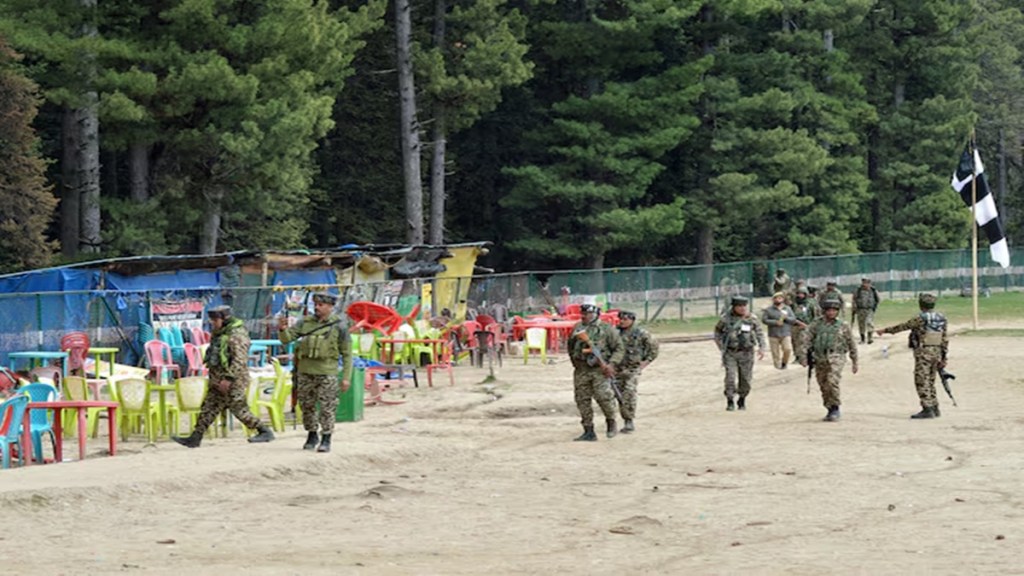– By Dr Manoranjan Sharma
The dastardly terrorist attack in Anantnag’s Baisaran Valley in the Pahalgam region (about 110 kms. from Srinagar) allegedly by Lashkar-e-Taiba-affiliated TRF, on April 22, 2025 marked a momentous moment, a tipping point in the annals of Jammu and Kashmir post the abrogation of Article 370. This devastating event did not just sound a death knell to tourism in Kashmir but also dealt a body blow to the overall environment of safety and security and investor confidence. It thus severely impaired the process and pattern of economic development built assiduously over the last few years.
Ramifications and Repercussions- Catastrophe of Huge Proportions
Let me do some number crunching to place this ominous event in a proper perspective. The State’s GSDP for FY 25 was expected to grow by 7.06 % (outstripping India’s GDP growth by a fair clip), during the period 2019 to 2025, economic growth rose by a CAGR of 4.89 % with per capita income rising to Rs. 1,54,703 in FY 25 (10.6 % yoy growth), and terror incidents falling from 228 in 2018 to 46 in 2023. The annual turnover at Sopore’s mandi had reached Rs 7,000 crore in 2024, with a wholesome impact on livelihoods across Kupwara, Bandipora, Baramulla, and Budgam. What made it prognostically alarming is the likely collapse of tourist arrivals, which had zoomed from 34 lakh in 2020 to a record 2.36 crore in 2024, including 65,000 foreign tourists. Evidently, then, the elaborate tourism ecosystem of Kashmir comprising over 1,500 houseboats, 3,000+ hotel rooms, countless taxi operators, tour guides, pony handlers, and handicraft sellers will be hit ruinously, in a manner that will not be possible for them to get up and running quickly.
A rough back of envelope calculations based on a discussion with a wide-cross section of society, including those at the helm of affairs during my visit to Kashmir about two years ago and anecdotal evidence strongly suggest that the daily spend of a family of two persons in Kashmir is Rs. 20,000 per day, at the very least. Hence, it’s not difficult to do the maths to gauge the kind of catastrophic effect the closure of tourism has on the economy of Jammu and Kashmir.
Where do we go from here?
Constant monitoring and eternal vigil is a prerequisite to peace and tranquility in the State.
It needs no clairvoyance to perceive that the rude shattering of the widely held belief that terrorism was history will hit income, output, and employment and cripple lives and livelihoods across the development spectrum-tourism, retail, handicrafts, shawls, carpets, etc. The second-order effects of such calamitous events also disrupt the ecological balance, education, employability, economy, people, culture and heritage, health and hygiene.
While tourism has a multiplier effect in all parts of the world because of its interdependencies and inter-linkages with the broader domestic economy, tourism is the lifeline, the sine qua non of the economy of Jammu and Kashmir.
This event is symptomatic of a deeper malaise – the malaise of a constant terrorist threat in the State. Hence, terrorism needs to be tackled on a war footing if the State is not to slip into a vicious circle of isolation, scare and under-development. The task ahead may be difficult but with an effective use of all options on the table- water, strategic, military, and diplomatic, it is by no means undoable. Failure is not an option.
(Dr Manoranjan Sharma is the Chief Economist at Informerics Ratings.)
(Disclaimer: Views expressed are personal and do not reflect the official position or policy of Financial Express Online. Reproducing this content without permission is prohibited.)
